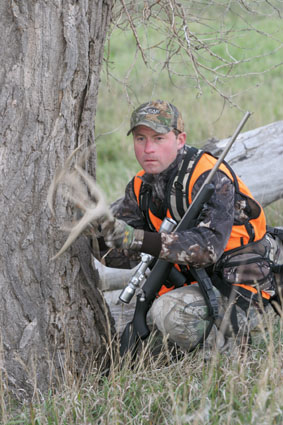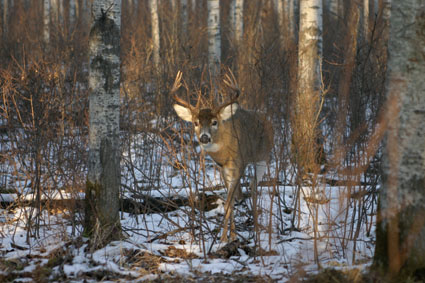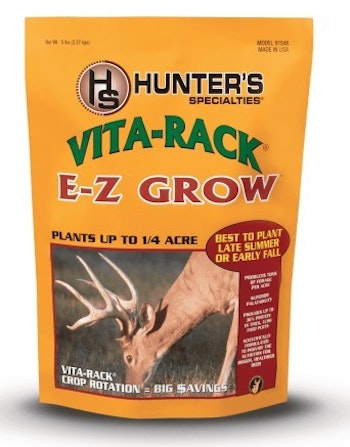 If you’re a do-it-yourself deer manager as most who hunt their own piece of ground are, one recurring theme that you’ve heard about is that a one-to-one buck-to-doe ratio is optimum. Managers of the most famous deer-hunting operations in the country sure push that notion, but is it always valid?
If you’re a do-it-yourself deer manager as most who hunt their own piece of ground are, one recurring theme that you’ve heard about is that a one-to-one buck-to-doe ratio is optimum. Managers of the most famous deer-hunting operations in the country sure push that notion, but is it always valid?
One-to-One Ratio Argument
There are two main arguments for the one-to-one buck-to-doe scenario. First, it can aid in maintaining a healthy herd. If a property holds too many does and fawns, the nutrition of the herd can suffer as a result of overbrowsing. By keeping the doe population in balance, the overall herd will benefit — ample browse for bucks might lead to better antler growth, under the right conditions. Does and fawns will also benefit, since healthy does birth healthier fawns, and are more likely to birth twins. More food throughout the year also means the deer won’t have to use all their fat reserves to make it through difficult periods of winter or drought.
The second reason to work toward a one-to-one ratio is to increase hunting success. If bucks and does are present in fairly equal numbers, then rutting activity should be much more pronounced during daylight hours. Bucks in more competitive situations cover a lot of ground looking for willing does. That increases the likelihood that they’ll be spotted by hunters.
When One-to-One Isn’t Practical
For effective herd management, the majority of the deer that use your property should also stay on your property. In most instances that means the property should consist of at least 500 acres, though many deer managers I’ve talked with actually place that figure higher, even as high as 5,000 acres. Needless to say, it takes a lot of land to keep deer close to home.
If your property lacks the fundamental living requirements to keep deer happy, you can also expect them to leave — at least temporarily. Cover, food and water are necessary to hold deer, otherwise they’ll wander across your property and the neighbors’. You’re trying to follow the tenets of quality deer management — harvest more does and let bucks mature — but are your neighbors? It won’t help your management efforts if bucks that bed down on your property get picked off on adjoining land because that’s where they have to go to take advantage of food plots and the does that are attracted to them.
 It’s not always a bad thing to have a few extra does around. Whitetail expert and outfitter Cody Warne endorses the idea of having MORE does than bucks in the herd. He’s not against a one-to-one ratio under the right conditions, but having a surplus of does isn’t always a bad thing. Warne’s property lies in central South Dakota, where winters can be tough on deer when the snow piles up. “I don’t mind wintering extra does, said Warne, “because I know that if we do have a severe winter and I end up losing deer from winterkill, it’s the does that will be the key to my herd bouncing back fast.”
It’s not always a bad thing to have a few extra does around. Whitetail expert and outfitter Cody Warne endorses the idea of having MORE does than bucks in the herd. He’s not against a one-to-one ratio under the right conditions, but having a surplus of does isn’t always a bad thing. Warne’s property lies in central South Dakota, where winters can be tough on deer when the snow piles up. “I don’t mind wintering extra does, said Warne, “because I know that if we do have a severe winter and I end up losing deer from winterkill, it’s the does that will be the key to my herd bouncing back fast.”
Plant for Healthy Deer
If you do decide that a one-to-one buck-to-doe ratio is right for you, be sure to provide the herd with ample amounts of the right feed. After sampling the soil, research the best food plot crops for the area, taking into account average temperatures and rainfall. If you choose clover, remember that the seed needs to be planted in low, moist areas. If you pick the right location, such as a lowland pasture, clover will reseed itself well for about 4 years. If you plant it in the wrong place, such as a hillside or in dry soils, it won’t last a season.
Besides choosing the best growing location, be sure the food plot is in an area where wildlife will readily access it. Placing it in an open field or next to a busy road might deter wildlife from visiting it during legal shooting hours. Plant it where deer will feel secure.
You probably live in an area where various types of grains and legumes will grow well. It almost goes without saying that you should plant forage that is universally appealing to wildlife — especially deer — during the longest period possible. Otherwise, choose a crop that is economical. Generally a mixture is better than a single crop, in case one seed variety should fail. Hunter’s Specialties Vita-Rack E-Z Grow is a top example. It includes a mixture of plants, producing up to 36 percent protein. Broadcast the seed during late summer and with a bit of rain, it will grow and green up quickly. A 5-pound bag will cover about .25 acres. With the right food, the herd will prosper.







